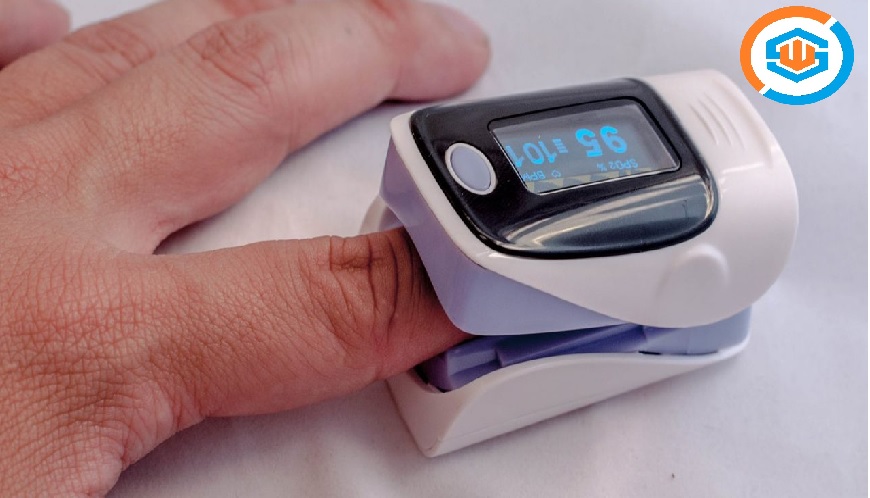
- 25 Apr
- 2021
Why do we use pulse oximetry?
Why do we use pulse oximetry?
People with respiratory or cardiovascular conditions, very young infants, and individuals with some infections may profit from pulse oximetry.
In this article, we look at how pulse oximeters work and what to expect when using one.
What is pulse oximetry?
Every system and organ in the body needs oxygen to survive. Without oxygen, cells begin to malfunction and eventually die. Cell death can cause severe symptoms and ultimately lead to organ failure.
The body transports oxygen to the organs by filtering it through the lungs. The lungs then distribute oxygen into the blood via hemoglobin proteins in red blood cells. These proteins provide oxygen to the rest of the body.
Pulse oximetry measures the percentage of oxygen in hemoglobin proteins, called oxygen saturation. Oxygen saturation usually indicates how much oxygen is getting to the organs.
Normal oxygen saturation levels are between 95 and 100 percent. Oxygen saturation levels below 90 % Trusted Source are considered abnormally low and can be a clinical emergency.
How it works
Pulse oximeters are clip-on devices that measure oxygen saturation. The device may be attached to a finger, a wrist, a foot, or any other area where the device can read blood flow.
Oxygen saturation can drop for many reasons, including:
suffocation
choking
infections, such as pneumonia
drowning
diseases, such as emphysema, lung cancer, and lung infections
inhaling poisonous chemicals
heart failure or a history of heart attacks
allergic reactions
general anesthesia
sleep apnea
Pulse oximeters work by shining a light through a relatively transparent area of the skin. The light shines through to a detector positioned on the other side of the skin.
For example, when a pulse oximeter is clipped onto a finger, one side of the clip shines the light, and the other detects it.
Benefits
Pulse oximeters are useful for people who have conditions that affect oxygen saturation. For example, a sleep specialist might recommend a pulse oximeter to monitor the nighttime oxygen saturation level of someone with suspected sleep apnea or severe snoring.
Pulse oximetry can also provide feedback about the effectiveness of breathing interventions, such as oxygen therapy and ventilators.
Some doctors use pulse oximetry to assess the safety of physical activity in people with cardiovascular or respiratory problems, or may recommend that a person wears a pulse oximeter while exercising. A doctor may also use pulse oximetry as part of a stress test.
Some hospitals also use pulse oximeters for particularly vulnerable patients. For instance, infants in neonatal intensive care units may wear pulse oximeters, which can alert staff of a drop in oxygen saturation.
Some benefits of pulse oximetry include:
monitoring oxygen saturation over time
alerting to dangerously low oxygen levels, particularly in newborns
offering peace of mind to people with chronic respiratory or cardiovascular conditions
assessing the need for supplemental oxygen
monitoring oxygen saturation levels in people under anesthesia
indicating dangerous side effects in people taking drugs that affect breathing or oxygen saturation
Pulse oximeters are now widely available to buy online, so some people without specific risk factors may use them.
What to expect
Pulse oximetry devices are noninvasive and carry no serious risks. Some people experience minor irritation, including skin redness and sensitivity.
If fitted very tightly and used for a prolonged period, pulse oximeters can cut off oxygen from surrounding vessels. Anyone who experiences numbness, tingling, or changes in skin color should promptly notify a doctor.
The main risk of pulse oximetry is a false reading. The accuracy of pulse oximeters depends on a correct fit, and minor changes in their positioning can produce an inaccurate reading. A person who rolls over in their sleep may loosen the device, causing it to give a false alert.
Oxygen saturation may also dip for brief periods due to other factors, such as a change in sleeping position or momentary breath-holding. A pulse oximeter gives an alert even when the drop is temporary and harmless.
For people with health anxiety, or whose doctors have not helped them understand the role of a pulse oximeter, this can cause unnecessary worry.
People using pulse oximeters should discuss the risks with a doctor and should maintain a record of the readings over time. Changes in readings, particularly in response to environmental changes, sometimes signal a health problem.
People interested in using consumer-grade pulse oximeters should discuss their plans with a doctor before investing in a device.
Limitations
Some factors can reduce the accuracy of a pulse oximeter reading, including:
changes in the pulse
carbon monoxide poisoning, which may not produce an alert in a pulse oximeter
bilirubin levels
lipids in blood plasma
interference from external light or color, including nail polish
having cold hands or poor circulation
People who use pulse oximeters to monitor oxygen saturation should not rely on the oximeter as a substitute for subjective experience.
People experiencing difficulty breathing, shortness of breath, dizziness, or other signs of possible oxygen deprivation should seek medical attention.
Note: - As every caution has been taken to provide our readers with the most accurate information and honest analysis. Please check the pros and cons of the same before making any decision on the basis of the shared details.











